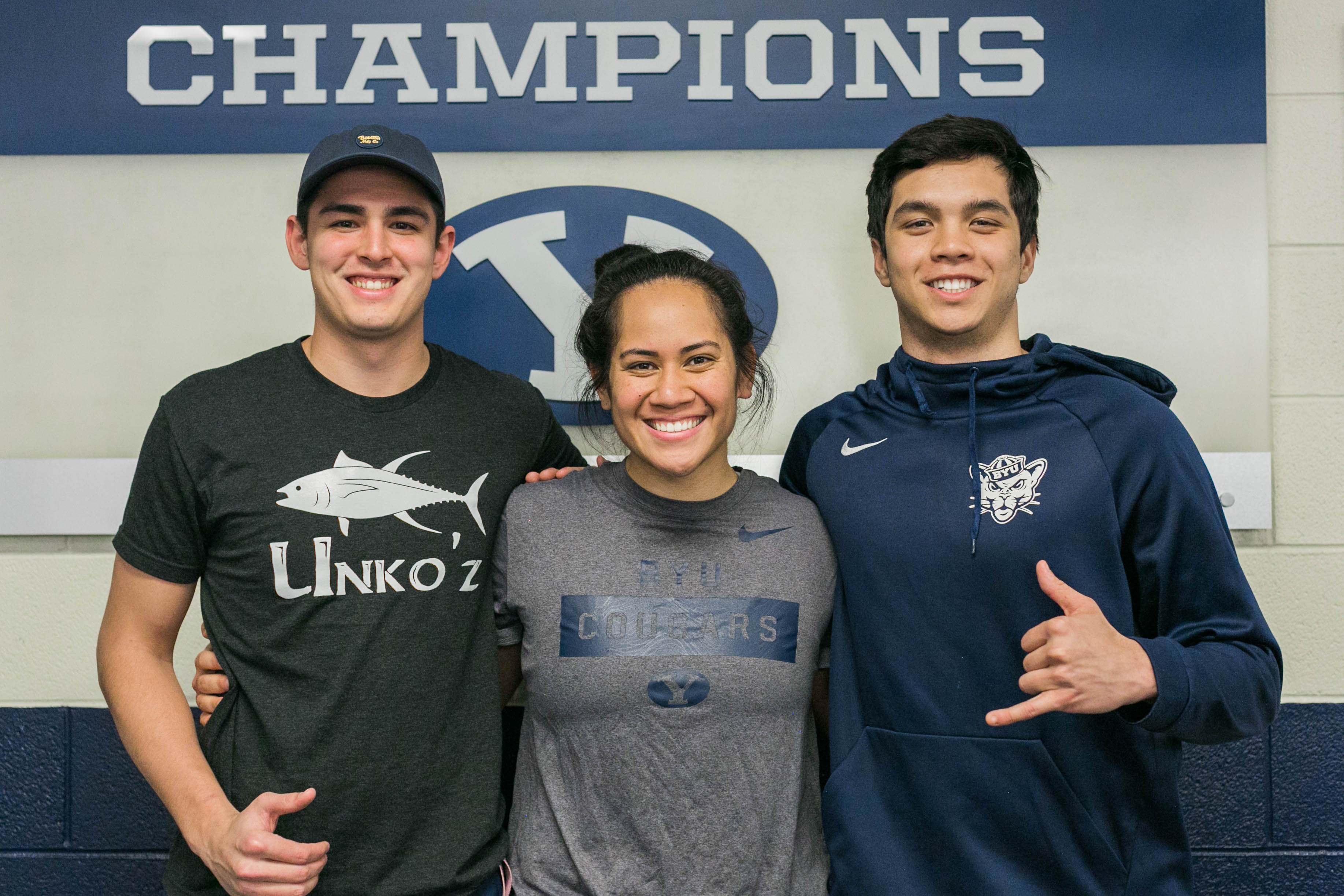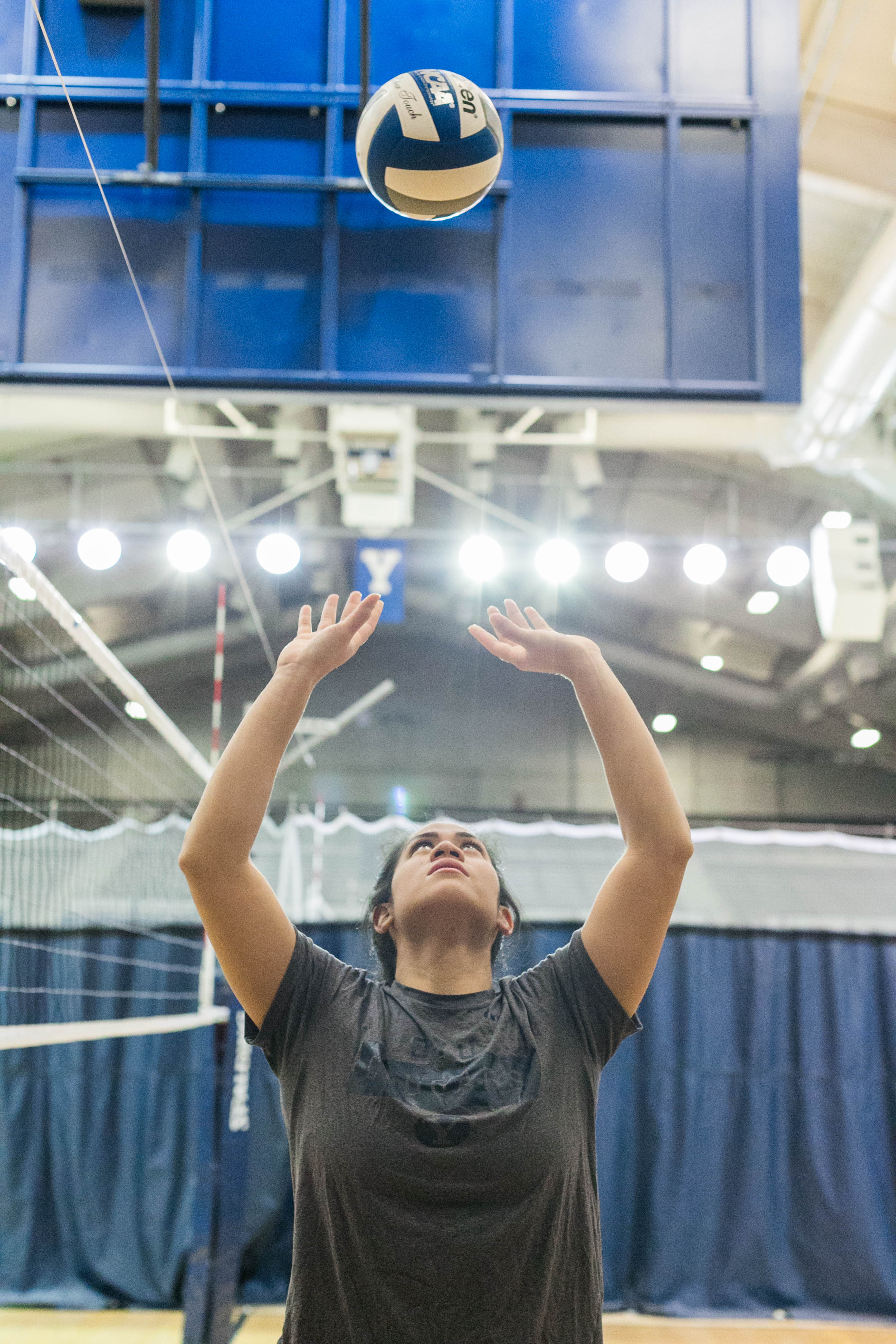
BYU’s volleyball program has deep roots in the nation’s warmer regions. In fact, 10 members of BYU’s men’s volleyball team and nine members of the women’s team come from either California, Hawaii or Puerto Rico.
Three of the four players from Hawaii, Kana’i Akana and Wil Stanley of the men’s team and Kiani Moea’i of the women’s team, all graduated from Punahou School in Honolulu.
Though just a small part of the BYU volleyball program, the three players have already made an impact. Men’s team head coach Shawn Olmstead praised their training and preparation in high school.
“The high school level there in Hawaii is a really, really high level,” he said. “They have really great coaches, too.”
Olmstead said it’s the high level of preparation combined with the sunny Hawaiian environment that sets apart Hawaiian volleyball players from their peers from other states.
According to the NCAA, less than 4 percent of female high school volleyball players play volleyball at any college level. For men, this number is only about 3.5 percent.
To play volleyball at the Division I level is even more prohibitive. Just 1.2 percent of female high school volleyball players and 0.6 percent of male players play volleyball at the Division I level. In other words, the odds of three players from the same state and high school playing on the same Division I team are slim.
Wil Stanley said it helps to have connections. The setter first came into contact with BYU when former BYU player and fellow Hawaii native Jaylen Reyes reached out to Stanley after he played at the Junior Nationals.
“There were other schools recruiting me, but just the connection I had with Jaylen was the real reason why I knew I could come here,” Stanley said.
Stanley said Reyes talked about his great experiences at BYU and even made a point to take Stanley to some of Reyes’ favorite places to eat in the area.
Although Reyes graduated before Stanley arrived at BYU, Kiani Moea’i was another familiar face in the program. Moea’i graduated from Punahou School a year before Stanley and had already completed her first season playing for the Cougars.

The senior initially decided to come to BYU after making an unofficial campus visit prompted by the BYU coaching staff. She was also influenced by her own Utah connections.
“I really liked the campus and I loved how beautiful mountains were,” Moea’i said. “I also had family in Utah, which was really nice.”
The women’s team setter said her blood relatives aren’t her only Utah family anymore. During her four years playing with the Cougars, her bond with the team has become almost familial in nature.
“It’s really nice because our team culture is very family oriented,” she said. “For me, that’s what I was worried about the most, but everyone genuinely cares about each other.”
Moea’i and Stanley said they are both proud of their time and experiences at BYU. Both look forward to the next generation of players from Hawaii to make their own mark in the BYU volleyball program.
The new players from Hawaii include Kana’i Akana — the third player from Punahou School — and Stanley’s younger brother, Jon Stanley.

Akana said having Wil Stanley, an old teammate, already at BYU helped to ease his transition to playing at the collegiate level in Utah.
“We’re really good friends from back home so it’s really easy to transition,” Akana said. “We played together my freshman and sophomore year in high school when he was a junior and senior.”
Akana decided to attend BYU with Wil Stanley’s encouragement. The freshman said having someone on the team who can understand him on a deeper cultural level has helped him easily transition and develop.
Olmstead said he appreciates the relaxed approach that comes naturally to the Hawaiian-born players.
“I don’t think they worry too much,” Olmstead said. “They’re just laid back about everything. I see them wearing flip flops all the time in the snow.”




